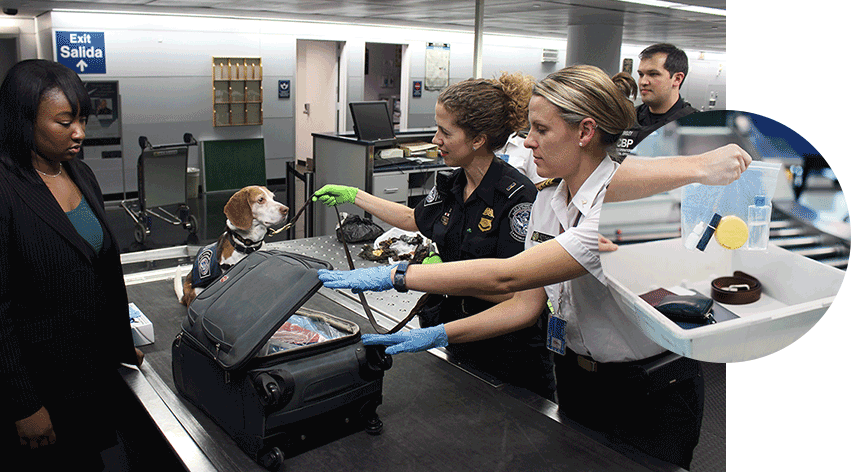It's no fun to pack your favorite snack or shampoo in your carry-on bag and learn that it doesn't meet TSA regulations and you'll have to leave it at security. Here is a big-picture guide to airline baggage and airport security regulations
to help you pack like a pro and breeze through security on your next big trip. Since regulations frequently change, make it a point to check for the most updated information with your airline and the Transportation Security Administration | Transportation Security Administration (tsa.gov) a few days before departure.
Travel advisors and frequent flyers know the 3-1-1 rule, a rough formula for airline carry-on baggage established by TSA that mandates that you can only carry liquids, aerosols and gels in 3.4-ounce containers, which must be stowed in a one-quart,
plastic zip-lock bag; one per passenger. The rule applies to common items such as toothpaste, shampoo and food and extends to wrapped gifts or packaged collections including lotions, creams, scented oils, liquid soaps, perfumes and even snow globes.
PACK SMART TO FACILITATE SCREENING
While you can bring, nail clippers, safety razors and travel-sized or blunt scissors in your carry-on baggage, you'll need to pack larger tools such as a hammer, drill, pliers, etc in your checked bags. Wrap any sharp objects in your checked suitcase
so they don't damage your bag or injure baggage handlers or transportation security officers.
To prevent unintentional short-circuiting and fires, there are rules about lithium batteries, commonly used in digital cameras, cell phones and laptop computers. For checked airline baggage, batteries must be installed in the electronic devices. In
carry-on baggage, you are limited to 8 grams (100-watt hours) of lithium batteries and they must be in original packaging or a protective case. The transportation security officer at the airport may deem some items too dangerous to permit through
the checkpoint. Check with TSA in advance if you're unsure about prohibited items.
Crowded planes are making airlines stricter about carry-on luggage. Check with your travel advisor or airline about the maximum size of carry-on baggage and save yourself from extra hassles by checking bags that are larger. It's always helpful to
pack light and organize the contents in all your bags so everything can be easily seen at a glance; otherwise, it can all spill out if an airport security officer needs to look inside. Traveling light can also help you avoid added baggage fees
for overweight checked luggage.
FAST-TRACK THROUGH CHECKPOINTS
We've all seen the news stories about the long lines at the airports, but it doesn't have to be that way if you arrange for expedited clearance. You'll need to pay an application fee and be approved as a low-risk traveler well in advance of your trip,
but it can be worth it to breeze through. (Some credit card companies offer statement credits to offset the fee for their cardholders.) Your travel advisor can advise you, or visit the Department of Homeland Security's Trusted Travel Programs page (Official Trusted Traveler Program Website | Department of Homeland Security (dhs.gov)).
The two most popular programs, both valid for five years, are:
- TSA PreCheck, which gets most travelers through security in five minutes or less. Plus, you won't have to take off your shoes, belts, or light jackets or remove laptops and compliant liquids from your bag.
- Global Entry, which includes TSA PreCheck, expedites your return from abroad. You won't have to fill out paperwork to re-enter the U.S.; you'll simply check in at one of the automatic kiosks at more than 75 airports.

A third privately-operated program, Clear, speeds you through the ID verification part of the security process by using a biometric screening checkpoint to verify your boarding pass and photo ID. Last we checked, it was available at over 50 airports
(and at many sports and entertainment venues). Many travelers use it in conjunction with TSA PreCheck.
Most importantly, make sure that your ID is up-to-date. If you're traveling domestically, the TSA will accept a driver's license or state-issued ID.
However starting May 3, 2023, you will need a security-enhanced REAL ID instead of a driver's license. Visit your state's driver's licensing agency website or REAL ID | Homeland Security (dhs.gov) for details
With a little preparation, you'll breeze through airport security and arrive at your gate relaxed and in vacation mode.